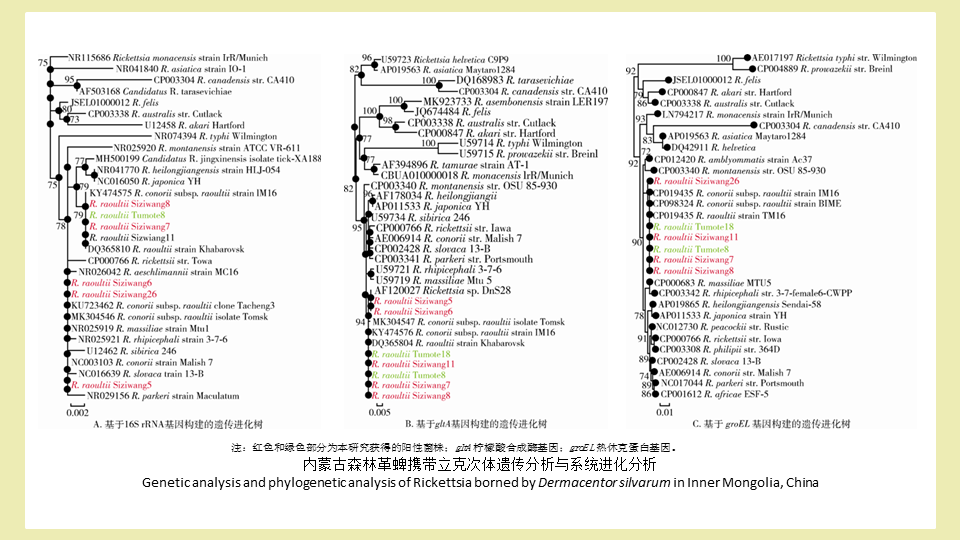 PDF(938 KB)
PDF(938 KB)


内蒙古自治区森林革蜱感染立克次体、无形体及埃立克体的研究
张晨曦, 武少卿, 刘洋, 刘芳, 王宇, 范蒙光, 李建云
中国媒介生物学及控制杂志 ›› 2023, Vol. 34 ›› Issue (4) : 559-563.
 PDF(938 KB)
PDF(938 KB)
 PDF(938 KB)
PDF(938 KB)
内蒙古自治区森林革蜱感染立克次体、无形体及埃立克体的研究
 ({{custom_author.role_cn}}), {{javascript:window.custom_author_cn_index++;}}
({{custom_author.role_cn}}), {{javascript:window.custom_author_cn_index++;}}An analysis of Rickettsia, Anaplasma, and Ehrlichia infections in Dermacentor silvarum in Inner Mongolia Autonomous Region, China
 ({{custom_author.role_en}}), {{javascript:window.custom_author_en_index++;}}
({{custom_author.role_en}}), {{javascript:window.custom_author_en_index++;}}
| {{custom_ref.label}} |
{{custom_citation.content}}
{{custom_citation.annotation}}
|
/
| 〈 |
|
〉 |